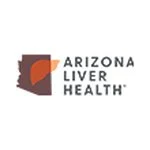
Cirrhosis is the replacement of healthy liver tissue with non-living scar tissue. It is a complication of liver disease from the progressive damage caused if not treated. Most people have no symptoms in the early stages, where the progression has the greatest chance of being reversed. If you are at risk for liver disease, the time to act is now.
What Causes Cirrhosis?
Cirrhosis is the result of chronic inflammation and swelling that scars the liver. It can take many years to get to this stage. Many different liver diseases can progress to cirrhosis. However, the most common ones are Hepatitis C, Alcohol-related Liver Disease (ARLD), Non-Alcoholic Fatty Liver Disease (NAFLD), and Hepatitis B.

In general, alcohol addiction and obesity are risk factors that can predispose you to liver disease and, ultimately, cirrhosis. NAFLD is the most common liver disease where fat accumulates in the liver and eventually can progress to liver failure. Insulin resistance, family history, metabolic syndrome, sedentary lifestyle, and chronic consumption of foods high in calories and fat are risk factors for NAFLD.
Cirrhosis Stages
The progression has 4 stages. The stage also determines whether the liver is compensated or decompensated. Compensated means the liver can still perform most of its essential functions despite scarring. Decompensated means the scarring now prevents the liver from functioning properly.
- Stage 1– Some scarring of the liver, but no complications and few symptoms.
- Stage 2– Blood flow through the liver becomes blocked, and pressure increases inside it. Enlarged veins that are a result of the added strain. Fatigue, itching, loss of appetite, fluid retention in legs, and bruising are more symptoms.
- Stage 3– The liver scarring becomes advanced, and the abdomen swells. Possible liver failure and serious complications can occur. This stage marks the transition into decompensated cirrhosis. Yellowing of the eyes and skin, brain fog, slurred speech, redness of the palms of hands, and internal bleeding are other symptoms.
- Stage 4– End-stage liver disease can develop, which is fatal if a transplant is not found.
Early Detection and Treatment
The liver is an amazing organ that can regenerate itself. Even with some scarring, the liver can heal itself well into the later stages when caught and treated. Cirrhosis has no cure. Though, by addressing any underlying conditions, making healthier lifestyle changes, and medications to control symptoms, patients can manage the progression. If you’re at risk, talk with your doctor.

Arizona Liver Health conducts free fibroscans that can detect diseases of the liver such as NAFLD and NASH. Once results are ready, our medical staff will help you determine if additional steps are needed. If your results indicate abnormal liver function, our team will discuss enrolling studies for the liver that may be an option. Schedule your FREE fibroscan today! Request an appointment here.
References:
https://www.medicinenet.com/cirrhosis/article.htm
https://www.webmd.com/digestive-disorders/understanding-cirrhosis-treatment#2



